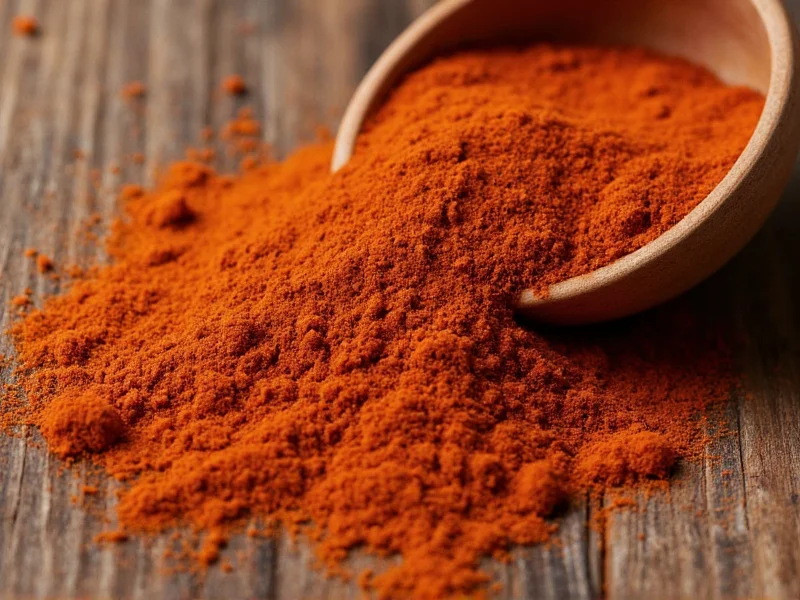Mace represents one of the world's most distinctive spices, often overshadowed by its more famous cousin nutmeg yet possessing its own unique culinary value. Understanding what mace is requires examining its botanical origins, flavor characteristics, and practical applications in cooking.
Botanical Origins of Mace
The Myristica fragrans tree, native to the Banda Islands in Indonesia, produces both nutmeg and mace from a single fruit. When the fruit ripens, it splits open to reveal the nutmeg seed包裹 in a bright red web-like covering called the aril. This aril is carefully removed and dried, transforming from bright red to rusty orange-brown, becoming what we know as mace.
Physical Characteristics of Mace
Mace appears in two primary forms:
- Whole mace blades - Delicate, irregularly shaped pieces resembling small petals
- Ground mace - Fine powder with a distinctive orange hue
The whole form generally offers superior flavor preservation and is preferred by professional chefs for its longer shelf life and more intense aroma. When purchasing whole mace, look for pieces with a deep orange color and strong fragrance.
Mace Flavor Profile Explained
What does mace taste like? This spice delivers a complex flavor profile that's simultaneously warm, sweet, and slightly peppery with subtle citrus notes. Compared to nutmeg, mace offers:
- A more delicate, floral character
- Less intense warmth
- Subtle citrus undertones
- Less sweet than nutmeg
| Characteristic | Mace | Nutmeg |
|---|---|---|
| Source | Aril surrounding nutmeg seed | Seed itself |
| Flavor intensity | Milder, more delicate | Stronger, more pungent |
| Flavor notes | Floral, citrus, pepper | Sweet, warm, woody |
| Color | Orange-red to brown | Brown |
| Best used in | Light-colored dishes, delicate sauces | Hearty dishes, baked goods |
Culinary Applications of Mace
Chefs value mace for its ability to enhance dishes without overwhelming them. The spice works particularly well in:
- Savory dishes - Especially in béchamel sauces, soups, and stews where its color won't darken the dish
- Baked goods - Adds complexity to cakes, cookies, and pastries
- Meat preparations - Complements pork, chicken, and game meats
- Pickling spice blends - Contributes to the complex flavor profile
When using whole mace in cooking, add the blades early in the cooking process to allow flavors to infuse, then remove before serving. For ground mace, add it toward the end of cooking to preserve its delicate flavor.
Storage Recommendations for Maximum Freshness
To maintain mace's distinctive flavor and aroma, proper storage proves essential. Whole mace blades retain their potency for up to two years when stored correctly, while ground mace typically remains flavorful for 6-12 months.
Follow these storage guidelines:
- Store in an airtight container away from light and heat
- Keep in a cool, dark cupboard (not near the stove)
- Consider refrigeration in humid climates
- Grind whole blades only when needed for maximum flavor
Substituting Mace in Recipes
When a recipe calls for mace but you don't have it available, several substitution options exist. The most common mace substitute is nutmeg, though you'll need to adjust quantities since nutmeg has a stronger flavor.
Substitution ratios:
- 1 blade of mace = ⅛ teaspoon ground nutmeg
- 1 teaspoon ground mace = ¾ teaspoon ground nutmeg
- For more complex substitutions, try equal parts allspice and ginger
Remember that while substitutions work in a pinch, they won't replicate mace's unique flavor profile exactly. The distinctive citrus notes of mace prove difficult to duplicate with other spices.
Historical Significance of Mace
Mace has played an important role in global trade for centuries. During the Middle Ages, Arab traders controlled the mace trade, deliberately spreading misinformation about its origins to protect their monopoly. European explorers later sought the "spice islands" to gain direct access to mace and nutmeg.
The Dutch went to extreme lengths to control mace production, destroying trees on other islands to maintain scarcity and high prices. This historical context explains why mace remained relatively obscure compared to other spices until more recent times.
Where to Find Quality Mace
When searching where to buy mace spice, look for specialty spice shops, well-stocked grocery stores, or reputable online retailers. The best mace comes from Indonesia, Grenada, or Sri Lanka. Check for:
- Bright orange color (darker pieces indicate age)
- Strong, pleasant aroma
- Whole blades rather than pre-ground when possible
- Freshness date on packaging
Consider purchasing small quantities initially to ensure freshness, as mace loses potency relatively quickly once ground.
Health Benefits of Mace
While primarily used for flavor, mace offers several potential health benefits. Traditional medicine systems have used mace for centuries to address digestive issues, pain relief, and respiratory problems. Modern research suggests mace contains compounds with antioxidant and anti-inflammatory properties.
Like most spices, mace works best as part of a balanced diet rather than as a medicinal treatment. Its primary value remains its unique contribution to culinary creations rather than specific health applications.
Using Mace in Modern Cuisine
Contemporary chefs increasingly recognize mace's versatility. The spice appears in innovative applications beyond traditional recipes:
- Infused in cream for desserts
- Added to craft cocktails for complexity
- Used in spice rubs for grilled vegetables
- Incorporated into artisanal cheese production
- Blended into specialty mustards and condiments
Professional kitchens often keep both whole and ground mace on hand to accommodate different recipe requirements and achieve precise flavor control.











 浙公网安备
33010002000092号
浙公网安备
33010002000092号 浙B2-20120091-4
浙B2-20120091-4